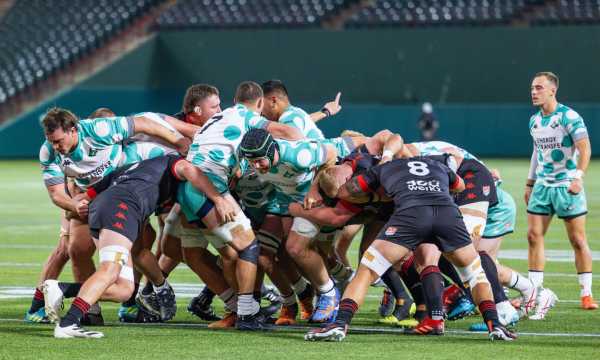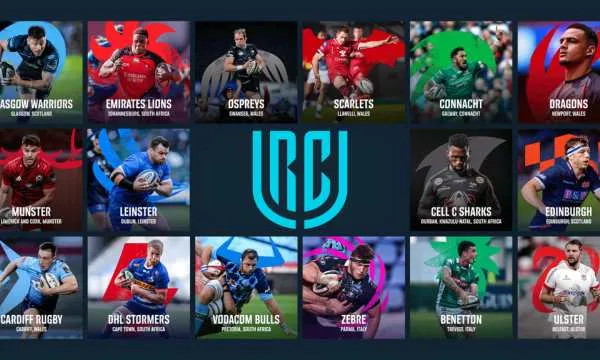Learn Everything About Rugby League
Whether you’re a recent fan or an experienced enthusiast, there’s always something new to discover about Rugby League.
Ad
Unlike Rugby Union, this sport offers more continuous and intense action, with fewer interruptions during matches.
In the article below, we’ll dive into all aspects of this fascinating sport, from its revolutionary origins to the biggest competitions and current stars.
Get ready to expand your knowledge about this sport that combines brute force, technical skill, and strategy into a unique experience.
1. How Rugby League Originated
Rugby League was born from a historic division that occurred in 1895 in England, when 22 clubs from the north of the country broke away from the Rugby Football Union.

Meet the Rugby League (Google Source)
The main cause of this split was the issue of professionalism, as northern clubs wanted to financially compensate their working-class players for lost work time.
While Rugby Union remained strictly amateur until 1995, the League version continued developing as a professional sport, mainly in the industrial areas of northern England.
The sport soon expanded to Australia and New Zealand, where it gained enormous popularity and developed independently from the British version.
Australia eventually became the global epicenter of this new rugby code, with its national competition (now known as the NRL) recognized as the strongest league in the world.
2. The Main Rules of This Sport
In Rugby League, two teams of 13 players each face off for 80 minutes, divided into two 40-minute halves.
The fundamental rule is the limit of 6 tackles for each attacking team to try to advance and score points.
After the sixth tackle, ball possession is mandatorily passed to the opposing team, creating a dynamic game rhythm.
After each tackle, play restarts with the “play-the-ball”, where the tackled player rolls the ball backward with his foot to a teammate. This mechanic eliminates disputes for the ball after tackles (rucks).
The scoring system also differs: a try is worth 4 points, the conversion after a try is worth 2, as are penalties, while a drop goal is worth only 1 point.
Exclusive elements of Rugby League:
- Rule of 6 tackles (similar to 4 downs in American football).
- Play-the-ball after each tackle.
- Non-contested scrums (mainly ceremonies to restart the game).
- Absence of lineouts, rucks and mauls.
- Only players involved in the tackle can contest for ball possession.
This rules structure was designed to create a game with fewer interruptions and more continuous action, making it more appealing to spectators seeking fast pace and direct physical confrontations.
3. Player Positions and Functions
This sport uses 13 players on the field, each with specific functions that require different combinations of physical and technical skills.
Forwards (8-13)
- Players(8,10): Strong players responsible for gaining ground in powerful carries
- Hooker (9): Ball distributor and central defensive organizer
- Second-rowers (11,12): Combine strength for advancing with the ball and defensive capability
- Lock (13): Versatile forward with good passing ability and game vision
Backs (1-7)
- Fullback (1): Last defender and counterattack specialist
- Wingers (2,5): Fast finishers on the edges
- Centers (3,4): Combine defensive power with ability to create offensive plays
- Five-eighth (6): Main playmaker along with the halfback
- Halfback (7): Tactical organizer and usually the team’s main kicker
A unique characteristic of Rugby League is that the jersey numbering is fixed by position.
This positional specialization facilitates understanding for new fans and reflects the more structured nature of the sport, where each player has clearly defined responsibilities.
4. The Major Rugby League Tournaments

Biggest Rugby League Tournaments (Google Source)
Australia’s National Rugby League (NRL) is widely considered the premier competition in the world.
Bringing together 16 teams from Australia and one from New Zealand, the NRL presents the highest technical level and the best-paid athletes in the sport.
The NRL grand final regularly attracts more than 80,000 spectators to Stadium Australia and millions of viewers globally.
In Europe, the Super League represents the top of this professional sport, with 12 predominantly English teams, plus occasional French participation.
The climax of the European season is the Grand Final played at Old Trafford, Manchester.
The historic Challenge Cup, established in 1896, is another prestigious competition of this British rugby code, involving clubs from different divisions in a knockout format. Main international competitions:
- Rugby League World Cup (every four years).
- State of Origin (annual series between Queensland and New South Wales).
- Four Nations (tournament between Australia, England, New Zealand and an invited nation).
- Pacific Test (matches between Pacific nations like Tonga, Samoa, Fiji and Papua New Guinea).
The State of Origin deserves special highlight in the rugby universe. This three-match series between Queensland and New South Wales is frequently described as the most intense competition in the sport, attracting record audiences in Australia.
Players represent their state of origin regardless of where they play professionally, creating confrontations of incredible rivalry and technical quality.
5. Legendary Players and Current Stars
Rugby League has produced extraordinary athletes who redefined the limits of the sport. Wally Lewis, known as “The King,” is revered as one of the greatest players of all time, dominating the State of Origin in the 80s.
Another legendary Australian, Andrew Johns, revolutionized the halfback position with his relentless tactical vision and complete skills, being one of only eight more recognized in Australian rugby.
In the United Kingdom, Martin Offiah stood out as one of the greatest scorers of all time, while New Zealander Benji Marshall enchanted fans globally with his magical passes and impressive sidesteps.
Current stars dominating this rugby code:
- James Tedesco (Australia): Complete fullback combining speed, agility, and game vision.
- Tom Trbojevic (Australia): Versatile player with extraordinary athletic ability.
- Sam Burgess (England): Dominant forward known for his intensity and leadership.
- Roger Tuivasa-Sheck (New Zealand): Famous for his devastating sidesteps and ability to break tackles.
- Jason Taumalolo (Tonga): Super powerful forward who revolutionized the role of modern forwards.
The current generation of athletes is redefining the sport with levels of professionalism, physical conditioning, and technical skills never before seen.
6. Champion Rugby League National Teams
Australia undisputedly dominates the international Rugby League scene, having won 11 of the 16 World Cups contested to date.
The “Kangaroos,” as the Australian team is known, have established a dynasty rarely seen in team sports.
This supremacy reflects the strength of the NRL and the deep culture of this sport in the country, especially in the states of New South Wales and Queensland.
New Zealand emerges as the second global force, having won the 2008 World Cup in a historic feat by defeating Australia in the final.
The “Kiwis” frequently challenge Australian dominance with their physical style and talented athletes.
Great Britain (now competing separately as England, Scotland, Wales, and Ireland) also has a rich history in international rugby, with three world titles.
Recently, Pacific nations like Tonga, Samoa, and Fiji have grown significantly in international Rugby.
The rise of Tonga is particularly notable, with many players of Tongan origin choosing to represent their ancestral country instead of Australia or New Zealand.
7. Impressive Records and Curiosities of Rugby League
Rugby League has accumulated a fascinating collection of records and curiosities throughout its more than 125 years of history.
The highest individual score in an international match belongs to Adam Voges, who scored an impressive 62 points representing Australia against Russia in the 2000 World Cup.
The match with the largest attendance in the history of this sport occurred in 1999, when 107,999 spectators packed Stadium Australia to watch the confrontation between Newcastle Knights and Melbourne Storm.
The oldest competition in the sport, the English Challenge Cup, is contested since 1896, predating many of the world’s most famous sports competitions.
Fascinating curiosities about Rugby League:
- In Papua New Guinea, this sport is a national sport and famous players are treated like true celebrities.
- The highest number of points in a club match was 142, when Huddersfield beat Blackpool by 142-4 in 2001.
- Cameron Smith holds the record for most games in the NRL (430) and most points in the competition’s history (2,786).
- The 40/20 rule (gaining territory through a strategic kick) is exclusive to this sport.
- Until 1922, the value of a try was only 3 points, later increased to the current 4 points.
- The traditional referee uniform includes shorts and colored socks, differentiating it from most professional sports.
8. Remember Historical Matches in this Sport
The 2008 World Cup final represented a historic milestone when New Zealand surprised the world by defeating favorite Australia 34-20, breaking decades of Australian dominance.
This monumental upset established a new balance of power in international rugby.
In the club scene, the 1989 NRL Grand Final between Balmain Tigers and Canberra Raiders is frequently cited as the greatest decision of all time.
The Raiders, led by the legendary Mal Meninga, won in overtime after an incredible comeback, exemplifying the unpredictability and drama that the sport provides to fans.
These iconic moments demonstrate why the sport captivates so many fans around the world.
The combination of impressive athletic skill, physical intensity, and moments of pure tactical genius creates sporting drama that remains in the collective memory for generations, strengthening the unique culture and tradition of the sport.
Conclusion
From its revolutionary origin as a movement for the professionalization of the sport to becoming a world-class athletic spectacle, Rugby League maintains its essence of fast pace, intense physical confrontations, and extraordinary skills.
The sport offers a unique sporting experience, where the simplicity of rules joins tactical complexity and incredible physical demands.
The constant evolution of the sport, combined with respect for its working-class roots and unique traditions, ensures that it maintains its distinct identity in the sporting world.
We hope this complete guide has enriched your knowledge and appreciation for the sport.
Rugby is much more than a simple game – it’s a vibrant culture, a captivating tradition, and a sporting spectacle that deserves to be celebrated.
FAQ
In which countries is Rugby League most popular?
What is the State of Origin and why is it so important?
How do scrums work in Rugby League?
What is a “40/20” kick in Rugby League?
What are the main club competitions in Rugby League?
 Want to Watch Rugby Live on Your iPhone? Discover the Best Apps
Want to Watch Rugby Live on Your iPhone? Discover the Best Apps
Watch all the games directly on your iPhone, follow every play in real-time and never miss a thrilling moment, wherever you are. Ad Tired of missing […]
Keep reading Rivalries and Unmissable Matches in the United Rugby Championship
Rivalries and Unmissable Matches in the United Rugby Championship
Dive into the heart pounding world of the United Rugby Championship where legendary rivalries create unforgettable sporting moments. Ad This championship has become the ultimate battleground […]
Keep reading Watch NRL Live: Best Apps for Android
Watch NRL Live: Best Apps for Android
With NRL live apps, rugby fans can catch favorite matches anytime, even when busy or away from home. Ad With the right Android apps, you can […]
Keep reading